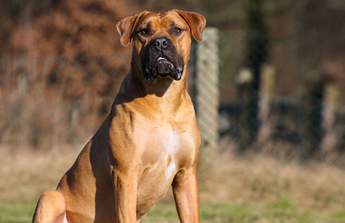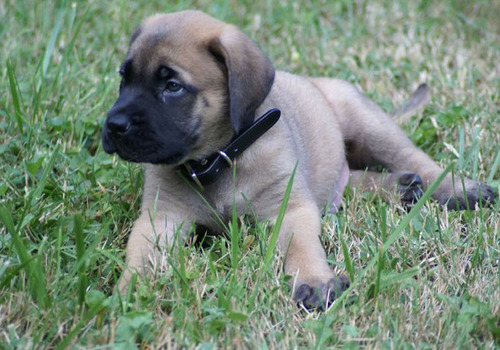Though their hair is short, Mastiffs shed year-round, with heavy shedding in the spring and fall. Weekly brushing with a hound mitt can keep flyaway hair under control.
Mastiffs only need to be bathed as needed, but they do need to have their wrinkles cleaned daily in order to prevent bacterial infections. The most essential part of cleaning the wrinkles is to dry them thoroughly. The flews (the part of the upper lip that hangs) also need to be cleaned after meals.
Check the ears on a regular basis for signs of wax buildup, irritation or infection. Clean the ears with a cotton ball and a veterinarian-approved cleanser; never use a cotton swab in a dog's ear canal.
Teeth should be brushed on a weekly basis to prevent tartar buildup, promote gum health and keep bad breath at bay. Trim nails monthly if the dog does not wear the toenails down naturally outdoors.
Bred to be guardians of “hearth and home,” Mastiffs have comparatively lowexerciserequirements and can live happily in an apartment. They benefit physically and psychologically from free play anddaily walks—a mile or two for adult Mastiffs.
However, owners must be careful not to overtax growing puppies and young adults: Don’t allow them to run up and down stairs, jump from heights, or engage in long walks. Begin with no more than half a block for a 2- to 3-month-old puppy.
Additionally, Mastiffs are notorious for plopping down during walks when they are tired or overheated. Therefore, a rule of thumb is to not walk them farther than you can carry them back!
For rapidly growinggiant breedssuch as the Mastiff, proper nutrition is critical through puppyhood and up to 2 years of age. Slow and steady growth is optimal.
If fed a densely caloric diet lacking an appropriate calcium/phosphorous ratio, Mastiff puppies and young adults are prone to skeletal disorders.
Most breed experts recommend that puppies start on an adult dog food formulation with a protein percentage no higher than 26 percent, and a calcium/phosphorous ratio of approx.1.2:1. Feeding scheduled meals is recommended, rather than free-feeding, to avoid excessive weight gain.
Mastiffs are large and will see a lot of problems corresponding to this size, particularly with joint andhip problemslikehip dysplasia. They also see a range of other health problems that you’ll want to consult an animal doctor about.
Don’t over-run your Mastiff for the first two years of its life.Like many large dogs, the Mastiff can run into hip and joint problems that should not be exacerbated by over exercise. At the same time,regularexercise will be critical in ensuring that your Mastiff has a relatively healthy weight throughout its life.
Obedience trainingand earlysocializationare “musts” for Mastiffs. Mastiffs learn quickly and want to please. However, the repetitions in a typical training class will quickly bore them, at which point they may lie down, snoring.
Make eye contact with your Mastiff; they communicate a great deal with their eyes, and they are excellent at reading your expressions and body language. Use praise and positive rewards—you can easily hurt their feelings by raising your voice. Hold several short sessions during the day, keeping it fun and varied. When treated with love, inclusion, and respect, Mastiffs can be trained to excel in almost any sphere.












